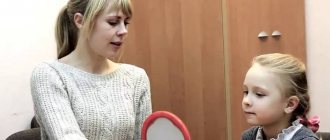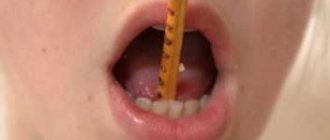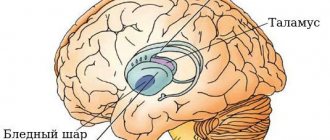“Methods of speech therapy and principles of speech therapy influence”
Speech therapy methods and principles of speech therapy intervention. Principles of analysis of speech disorders.
Principles of speech therapy work
- these are the general starting points that determine the activities of the speech therapist and children in the process of correcting speech disorders.
In the process of organizing remedial training, great importance is attached to general didactic principles:
educational nature of teaching, scientific nature, systematicity and consistency, accessibility, visibility, consciousness and activity, strength, individual approach.
Speech therapy is also based on special principles:
Etiopathogenetic principle
. (When eliminating speech disorders, it is necessary to take into account the totality of etiological factors that determine their occurrence. These are external, internal, biological and socio-psychological factors).
The principle of a systems approach.
(
Assumes the need to take into account the structure of the defect in speech therapy work, determining the leading disorder, the relationship between primary and secondary symptoms)
The principle of taking into account the structure of speech disorders
. (Speech disorders in most cases are a syndrome in the structure of which there are complex and ambiguous connections between speech and non-speech symptoms)
The principle of complexity
. (Since most disorders are a combination of speech and non-speech symptoms, therefore, a complex (psychological-medical-pedagogical) intervention is necessary; it is very important in eliminating all complex speech disorders, but it is especially significant in eliminating dysarthria, stuttering, alalia and aphasia.)
The principle of a differentiated approach.(
The system of speech therapy work to eliminate various forms of speech disorders is differentiated, taking into account many factors that determine it. A differentiated approach is carried out based on taking into account the etiology, mechanisms, symptoms of the disorder, the structure of the speech defect, the age and individual characteristics of the child. In the process of correcting speech disorders, general and specific patterns of development of abnormal children are taken into account)
In the process of speech therapy, it is necessary to take into account the level of development of speech, cognitive activity, features of the child’s sensory sphere and motor skills.
The principle of phasing. (
Speech therapy intervention is a purposeful, complexly organized process in which various stages are distinguished. Each of them is characterized by its own goals, objectives, methods and techniques of correction. The prerequisites for the transition from one stage to another are consistently formed. For example, work to eliminate dyslalia includes the following stages: production, automation, differentiation of sounds.
Development principle.(
During speech therapy, we must not forget about personality development)
Ontogenetic principle
.(Speech therapy intervention is built taking into account the patterns and sequence of formation of various forms and functions of speech)
The formation of correct speech skills, forms and functions of speech is also carried out in ontogenesis, from simple to complex, from concrete to more abstract, from productive forms to unproductive, from situational speech to contextual, from the assimilation of semantic relations to the assimilation of formal features of speech (language) units .
The principle of taking into account personal characteristics
. (A large place in speech therapy work is occupied by the correction and education of the personality as a whole; the peculiarities of personality formation in children with various forms of speech disorders, as well as age-related characteristics, are taken into account.)
Of particular importance is taking into account personal characteristics when correcting speech disorders associated with brain disorders (alalia, aphasia, stuttering, dysarthria). In this case, the symptoms of the disorder show pronounced features of personality formation, which are both primary in nature, caused by organic damage to the brain, and the nature of secondary layers.
The impact on a child with a speech disorder is associated with the normalization of social contacts with surrounding people.
The principle of the activity approach. (
Correction of speech disorders is carried out taking into account the leading activity. In preschool children, it is carried out in the process of play activity, which becomes a means of developing analytical-synthetic activity, motor skills, sensory sphere, enriching the vocabulary, mastering language patterns, and shaping the child’s personality.)
At school age, the leading activity is educational, which becomes the basis of correctional and speech therapy work in eliminating speech disorders in children of this age.
The principle of using a workaround.(
In the process of overcoming alalia and aphasia, the creation of new functional systems based on preserved links is of great importance.)
In speech therapy work, when auditory differentiation is impaired, reliance is placed on intact links.
The principle of developing speech skills in conditions of natural speech communication. (
To consolidate correct speech skills in conditions of natural speech communication, close communication in the work of a speech therapist, teacher, educator, and family is necessary. The speech therapist informs teachers and parents about the nature of the child’s speech disorder, about the tasks, methods and techniques of work at this stage of correction, and strives to consolidate correct speech skills not only in the speech therapy room, but also in lessons, during extracurricular hours under the control of teachers and parents.
Speech therapy methods
Speech therapy is carried out using various methods. The teaching method in pedagogy is considered as a way of joint activity between the teacher and children, aimed at children mastering knowledge, skills and abilities, at developing mental abilities, cultivating feelings, behavior and personal qualities.
Speech therapy work uses various methods: practical, visual and verbal.
. The choice and use of one or another method is determined by the nature of the speech disorder, the content, goals and objectives of correctional speech therapy, the stage of work, the age, individual psychological characteristics of the child, etc.
I Practical methods (game exercises and simulations
).
A) Exercise
- this is the child’s repeated repetition of practical and mental specified actions. Effective in eliminating articulatory and voice disorders, sound production, etc.
1.Imitative-performing methods
. They are performed by children in accordance with the model (breathing, vocal, articulatory, developing general, manual motor skills).
2.Construction.
Used to eliminate optical dysgraphia. Children are taught to construct letters from elements, from one letter to another.
3.Creative exercises
. And the use of learned methods in new conditions, on new speech material. Performing any exercises contributes to the formation of practical skills only if the following conditions are met:
- the child’s awareness of the goal. This depends on the clarity of the task, the use of the correct demonstration of methods of execution, the disaggregation of the demonstration of complex exercises, taking into account the age and mental characteristics of the child;
- systematicity, which is implemented in repeated repetition (in speech therapy classes, outside of them, in class, during extracurricular time using a variety of speech and didactic material and various situations of speech communication);
— gradual complication of conditions, taking into account the stage of correction of the age and individual psychological characteristics of the child; conscious implementation of practical and verbal actions;
- independent performance at the final stage of correction (although at the initial stages of correction, exercises can be performed with the help of a speech therapist, with mechanical assistance, etc.);
— differentiated analysis and assessment of implementation.
B) Game method
involves the use of various components of gaming activity in combination with other techniques: demonstration, explanation, instructions, questions. One of the main components of the method is an imaginary situation in expanded form (plot, role, game actions).
Various games are used with preschool children: singing, didactic, active, creative, dramatization. Their use is determined by the tasks and stages of correctional speech therapy work, the nature and structure of the defect, the age and individual mental characteristics of children.
B) Modeling
is the process of creating models and their use in order to form ideas about the structure of objects, the relationships and connections between the elements of these objects.
The effectiveness of their use depends on the following conditions:
-the model must reflect the basic properties of the object and be similar in structure to it;
- be accessible to a child of a given age;
- should facilitate the process of mastering skills, abilities and knowledge.
Sign-symbolic modeling has become widely used. For example, when forming sound analysis and synthesis, graphic diagrams of the structure of a sentence, the syllabic and sound composition of a word are used.
II Visual methods
- forms of assimilation of knowledge, skills and abilities that are significantly dependent on the visual aids and technical teaching aids used in teaching.
A) Observation
- the use of paintings, drawings, articulation profiles, layouts, as well as showing sound articulation and exercises.
Visual aids should:
-be clearly visible to everyone;
- selected taking into account the age and individual psychological characteristics of the child;
- correspond to the tasks of speech therapy work at this stage of correction;
-accompanied by precise and specific speech;
— a verbal description of an object should contribute to the development of analytical-synthetic activity, observation, and speech development.
The use of benefits can serve various purposes:
— correction of sensory disturbances (ideas about color, shape, size, etc.),
- development of phonemic perception (in the picture find objects whose names contain the sound being practiced),
- development of sound analysis and synthesis (find objects in a plot picture whose names have 5 sounds),
-reinforcing the correct pronunciation of sounds,
- development of vocabulary words,
-development of grammatical structure,
- development of coherent speech (composing a story based on a plot picture, based on a series of plot pictures).
B) Playing tapes
recordings, recordings on records are accompanied by a speech therapist’s conversation and retelling. Tape recordings of the speech of the children themselves are used for analysis, to identify the nature of the disorder, to compare speech at various stages of correction, and to instill confidence in the success of the work.
B) Filmstrips,
movies are used to automate speech sounds during a conversation when retelling content, to develop the skills of continuous, smooth speech when eliminating stuttering, and to develop coherent speech.
III Verbal methods
are determined by the age characteristics of children, the structure and nature of the speech defect, goals, objectives, and the stage of correctional intervention.
When working with preschool children, verbal methods are combined with practical visual ones.
At school age, it is possible to use only verbal methods without supporting them with visual and practical ones.
A) Story
- This is a form of teaching in which the presentation is descriptive. It is used to create in children an idea of a particular phenomenon, to evoke positive emotions, to create a model of correct expressive speech, to prepare children for subsequent independent work, to enrich their vocabulary, and to consolidate grammatical forms of speech.
B) Preliminary
conversation. The speech therapist identifies children’s knowledge and creates a mindset for mastering a new topic.
B) Final
, generalizing conversations. They are carried out to consolidate and differentiate speech skills.
The use of conversation in speech therapy work must meet the following conditions:
- rely on a sufficient volume of ideas, the level of speech skills, and be in the child’s zone of proximal development;
- correspond to the logic of the child’s mental activity, take into account the peculiarities of his thinking;
- to activate children’s mental activity using a variety of techniques, including leading questions;
- questions must be clear, precise, requiring an unambiguous answer;
- the nature of the conversation must correspond to the goals and objectives of correctional work.
Objectives of the conversation:
- development of cognitive activity,
-reinforcing correct pronunciation,
— clarification of the grammatical structure of sentences,
- consolidation of skills of smooth continuous speech, etc.
IV Verbal techniques
: showing a sample, explanation, explanation, pedagogical assessment.
A) Explanation and explanation are included in visual and practical methods. For example, when producing sound, along with the demonstration, the speech therapist uses an explanation of its correct articulation, pays attention to the position of the tongue and lips, and accompanies the demonstration with explanations.
Of great importance in speech therapy work is the pedagogical assessment of the result of completing a task, the method and progress of its implementation. It helps improve the quality of the correction process, stimulates and activates the child’s activity, and helps the formation of self-control and self-esteem.
Speech therapy is carried out in the following forms of training:
- frontal,
- subgroup,
- individual lesson,
- lesson.
How does speech therapy work work?
Speech pathologies are systemic in nature, so correction takes place in close cooperation with other medical professionals. Often, a speech therapy plan includes not only speech correction, but also medication treatment and psychotherapeutic counseling. There are the following main causes of speech disorders:
- Physiological. The most common pathology faced by a huge number of children is malocclusion, which causes problems with the pronunciation of sounds. In such cases, in addition to speech therapy work, a consultation with an orthodontist is required, who selects the optimal methods of therapy. Underdevelopment of the hearing organs or incorrect articulation can also cause speech impediments.
- Psychological. If a child has been in unfavorable conditions since childhood, experiences a lack of communication with family members and peers, does not receive enough attention, and is regularly exposed to stress, various types of speech disorders (dyslalia, stuttering) may occur. If the social factor is affected, the intervention of a psychotherapist and psychologist is required.
Many pathologies associated with speech appear due to several reasons, both physiological and psychological. In this case, it is important to take into account the etiology of the disorders; the content of speech therapy work includes a set of measures: psychological, pedagogical and medicinal intervention.
Teaching methods
The principles of speech therapy work with young children with speech disorders involve the use of several different techniques. As a rule, they are all used in combination, and our Center’s specialists select exercises in accordance with the individual characteristics of the child. The joint activities of the teacher and the child are aimed at acquiring knowledge and skills, developing mental abilities, nurturing feelings and shaping personality. The main forms of speech therapy work include:
- Practical. These include exercises, games and simulations of various situations. When carrying out such activities, the child uses his creative abilities, develops fine motor skills, and trains his imagination.
- Visual. The teacher uses aids that facilitate the learning of the material, including drawings, paintings, films, and music.
- Verbal: story, conversation, reading.
All methods are divided into direct and indirect. In correctional work, the choice of method of influence depends on the child’s knowledge and skills, the degree of impairment, and age category.





